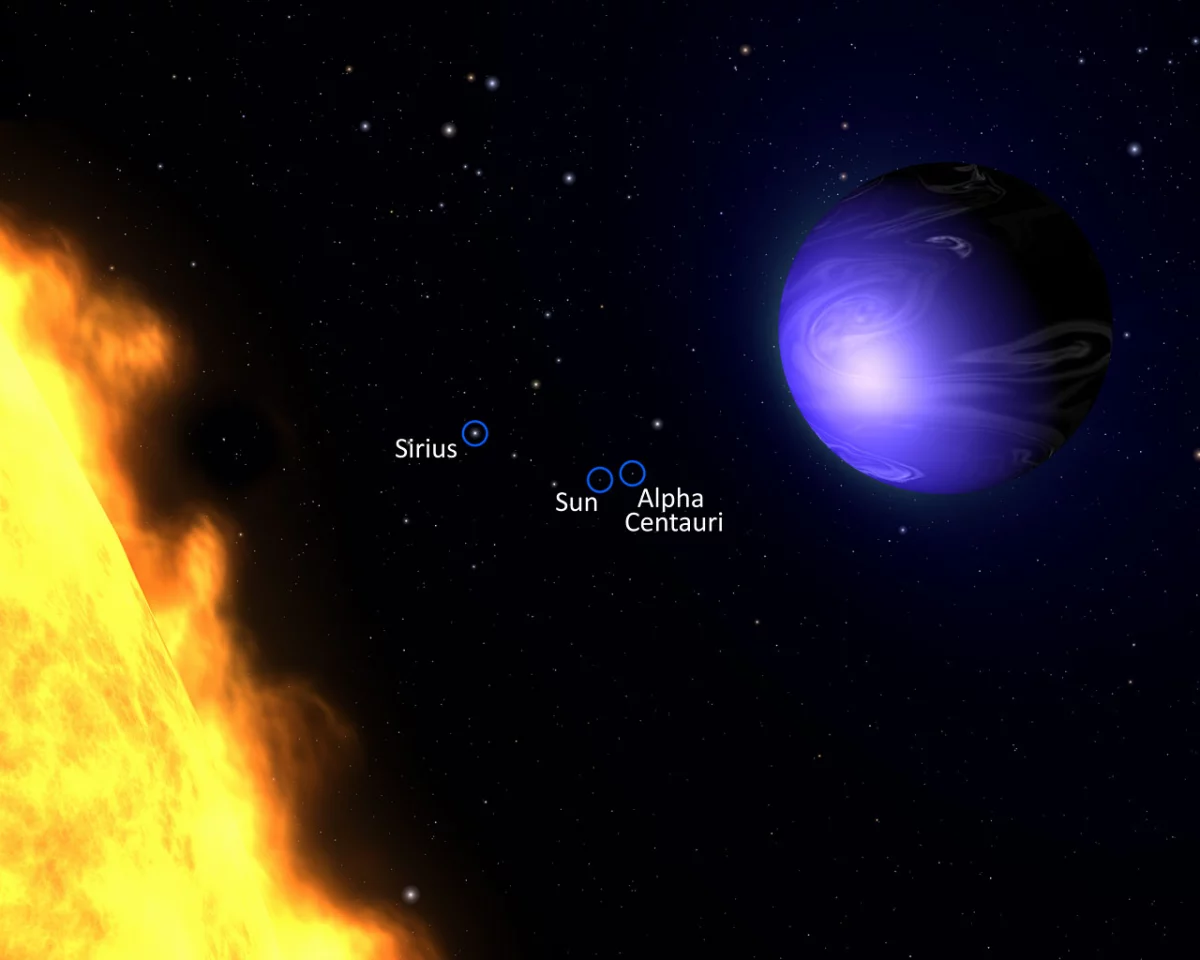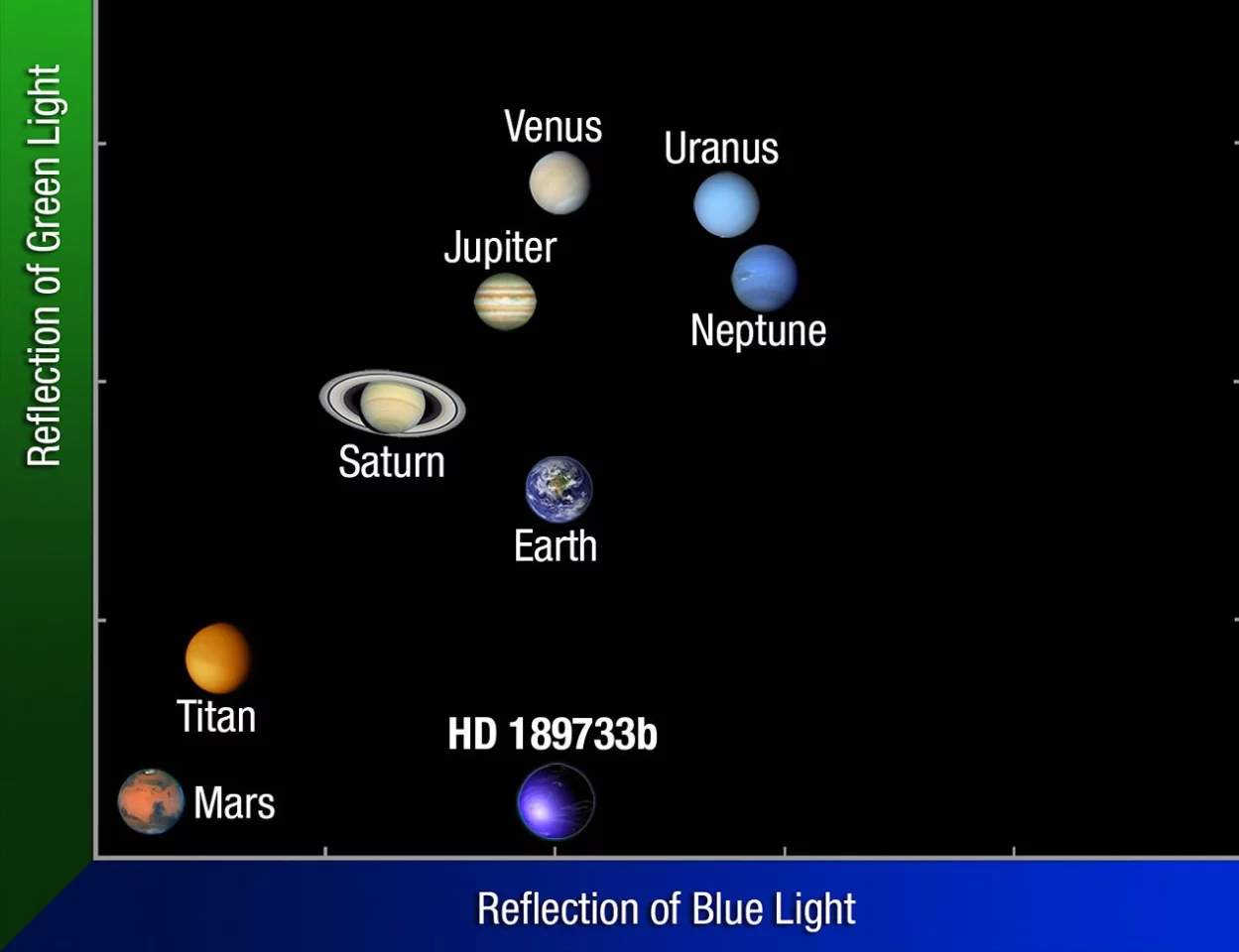Uncovering any sort of detailed information about an exoplanet presents astronomers with an exceedingly difficult challenge. Despite the hurdles, however, some exoplanets are particularly well situated for such study. Astronomers have previously determined considerable information about the atmosphere and climate of HD 189733b. Now, thanks to Hubble observations made while it passed behind its primary star last December, we also know that this hot Jupiter-like planet is a deep cobalt blue in color, marking the first time that the color of an exoplanet has been measured.
While more than 1,000 exoplanets have been discovered and verified, there are only a handful about which astronomers know as much (or as little) as they know about Pluto. HD 189733b is one of them. About the size of Jupiter, it orbits an unremarkable orange dwarf star in Vulpecula, a faint constellation in the northern sky. The exoplanet has an atmosphere containing a good deal of dust, as well as water vapor, carbon monoxide, carbon dioxide, and methane, with observations suggesting that the atmospheric pressure near the surface is about 60 percent that of Earth.
Tidally locked to its primary star (HD 189733 is a double star, but the other member is far away from the primary), the exoplanet follows an orbit with a radius of about 0.03 astronomical units, about one-tenth the distance between our Sun and the innermost planet, Mercury. The temperature at the cloud tops is about 1,100° K, and there is a hot spot offset from the point facing the primary. This suggests surface winds that blow at nearly 3 km/s (1.9 mi/sec). Now, thanks to Hubble observations, we also know that HD 189733b is a deep cobalt blue in color.

The dark blue color is probably due partially to light scattering from atmospheric silicate dust, and partially due to sizable amounts of sodium in the atmosphere. It is certainly not a sign of an Earth-like water world.
All the atmospheric and climatic information about HD 189733b has been accumulated without ever seeing the planet directly. The disk of the planet is about 50 microarcseconds wide, and the planet is too dim to study interferometrically, the only present approach that could resolve so small a disk. For comparison, if the proposed 40-m (131-ft) European Extremely Large Telescope were built in space (which is not the current plan), it could resolve two objects separated by no more than three milliarcseconds. As the angular distance between the planet and its star is only about 1.5 milliarcsecond from our vantage point, even being able to see the exoplanet as a separate point of light poses a major problem.
Instead, the Hubble result involved measuring the light from HD 189733 and its exoplanet together as the exoplanet is eclipsed when passing behind the star's disk. By measuring the difference between the light of the star and exoplanet and the light of the star alone, the portion of the light from the exoplanet can be calculated. In addition, the Hubble provided sufficiently high quality measurements that the visual color of HD 189733b could be determined to be cobalt blue.

Despite this somewhat homey color, the comparison above of the color of HD 189733b with those of the Solar System planets shows little similarity. The simple fact is that we still have a great deal to learn about planet formation and the variety of planets that might be found. This is not too surprising, as we have had only eight (nine for Pluto supporters) to examine out of billions in our Galaxy. We can expect a constant stream of surprises about how a stellar system with planets might appear.
An artist's animation of HD 189733b can be seen below.
Source: SpaceTelescope.org









